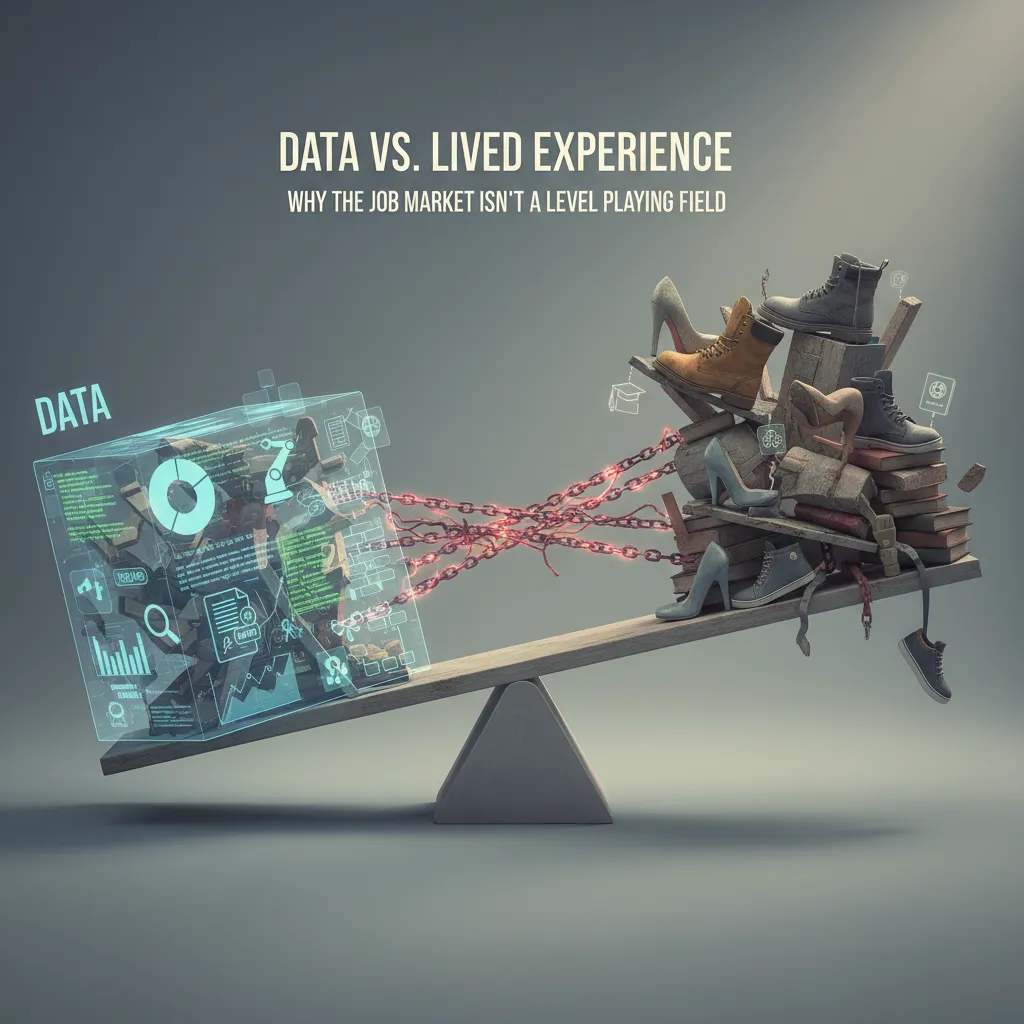The first time I realized my bank account didn’t care about my years in uniform, it was 2 a.m. and the power was off—self-imposed blackout, thanks to a maxed-out utility bill. The echo of ‘thank you for your service’ didn’t pay the rent. If you think transitioning from the military is all about medals and LinkedIn endorsements, buckle up. This journey isn’t for the faint of heart—or the financially unprepared.
The Not-So-Glorious Reality: Veterans and the Invisible Struggle
When people talk about the veteran unemployment rate, they usually throw out a number—like the BLS’s 3.1% in August 2025. But let’s be honest: those numbers barely scratch the surface. As Lisa Rosser put it,
“The official unemployment rate for veterans just scratches the surface of what’s really going on beneath the numbers.”
What most folks don’t see is the invisible struggle—the kind that doesn’t show up in a spreadsheet or a press release. Veteran unemployment challenges aren’t just about finding a job. They’re about finding stability, dignity, and a sense of purpose after service. And for many of us, the real battle starts the moment we hang up the uniform.
Behind the Numbers: The Hidden Cost of Underemployment
Here’s the truth: the veteran jobless rate doesn’t tell you how many of us are working jobs that barely keep the lights on. According to LISEP, the “True Rate of Unemployment” (TRU) for veterans was a staggering 18.2% in early 2025. Functional unemployment—meaning jobs that don’t pay a living wage or offer economic stability—hovers between 15% and 20%. That’s a lot of us stuck in roles that don’t fit, don’t pay, and don’t value the skills we brought home.
Unemployment and Underemployment: The Silent Battle
Unemployment and veteran underemployment often cloak themselves in silence. We don’t talk about it at the VFW or in group chats. There’s this unspoken rule: you served, so you should have it together. But the reality? Many of us are sitting in the dark, literally and figuratively, trying to save a few bucks on the electric bill. I remember those nights—staring at my bank app, laughing at the absurdity, because sometimes dark humor is the only thing that keeps you going. It’s a survival tool, right up there with discipline.
Transitioning Without a Playbook
Transitioning to civilian life is like being dropped into a new battlefield—one nobody trained you for. One day you’re following orders, the next you’re navigating job boards and rejection emails. There’s no chain of command, no mission brief, just a pile of bills that keeps respawning. The shame and guilt creep in, even though you know you’ve got the discipline and grit to handle almost anything. But this? This feels different. This feels like starting over from zero, with no playbook and no backup.
Official unemployment stats don’t capture the daily grind of making ends meet.
Many veterans face hidden economic instability, even while “employed.”
Shame and silence keep too many of us from reaching out for help.
Discipline and dark humor become survival tools in the civilian world.
If you’ve ever wondered why the numbers don’t match the struggle you feel, you’re not alone. The invisible battle is real—and it’s time we start talking about it.

Data vs. Lived Experience: Why the Job Market Isn’t a Level Playing Field
When you’re staring at your bank account in the dark, wondering how you’re going to pay the electric bill, it’s hard to care what the official veteran unemployment data says. I’ve been there. I’ve read the headlines about “record low” veteran unemployment rates and wondered if I was the only one missing out. But here’s the truth: the numbers don’t tell the whole story about the veteran employment situation in 2025.
Why ‘Employed’ Doesn’t Always Mean ‘Financially OK’ for Veterans
Let’s get real. Just because a veteran is counted as “employed” doesn’t mean they’re actually making ends meet. I know plenty of vets working part-time, gig jobs, or low-wage positions that barely cover groceries, let alone rent or medical bills. As Steve Nowlan put it:
Even ‘employed’ isn’t the same thing as economically secure.
That hit me hard. The veteran labor force is full of people who technically have jobs, but are still struggling. The gap between what the data shows and what we actually live through is huge.
TRU and Functional Unemployment: The Hidden Numbers
Most people see the Bureau of Labor Statistics (BLS) number and think, “Hey, veterans are doing fine.” But the True Rate of Unemployment (TRU) tells a different story. In Q1 2025, the BLS said veteran unemployment was just 3.1%. But the LISEP TRU for veterans? A staggering 18.2%. That’s almost one in five veterans who want to work full-time but can’t find enough hours or a job that pays the bills.
This functional unemployment rate exposes a systemic flaw: we’re counting jobs, not livelihoods. Many veterans are underemployed, working below their skill level or for wages that don’t support a family. That’s not success—it’s survival.
Disability and Era: The Toughest Battlefields
Not all veterans face the same challenges. If you served in the Gulf War II era, the numbers are even tougher. In April 2024, unemployment for Gulf War II veterans was 3.4%. But if you have a service-connected disability, it jumps to 5.7% (Sep 2024–Aug 2025). For those without disabilities, it’s 3.0%. The veteran employment situation is especially rough for those who came home with injuries—physical or invisible.
Tale of the Tape: The Veteran Labor Force in 2025
Veterans outside the labor force since 2019: 60–65%. That’s more than half of us not even counted in the stats.
Gulf War II unemployment rate (April 2024): 3.4%
Veterans with disabilities unemployment rate: 5.7%
Veterans without disabilities unemployment rate: 3.0%
These numbers show the real veteran economic well-being gap. The job market isn’t a level playing field—especially for those of us who served, sacrificed, and came home to a system that counts us but doesn’t always support us.

Rock Bottom and the Power of Tough Decisions: My Night in the Dark
You ever find yourself sitting in the dark, not because you want to, but because you’re trying to stretch every last dollar? That was me—one April night, phone screen glowing, staring at my bank account and laughing at the absurdity of it all. That laugh wasn’t joy; it was the kind of dark humor veterans know too well. I was a few days away from the lights getting shut off for good, and the only thing thinner than my patience was my checking account.
This is the part of veteran transition to civilian life nobody prepares you for. You leave the military with discipline, resourcefulness, and a stubborn streak a mile wide. You’re used to pushing through, finding a way, and making do. But here’s the truth: discipline alone doesn’t pay the bills. I kept thinking, “I served my country. Why does it feel like I’m starting over from zero?” The shame and guilt hit hard. You start to wonder if you’re the only one who can’t figure it out.
The myth is that if you work hard and stay disciplined, everything will fall into place. But the civilian world doesn’t play by those rules. There’s no chain of command, no clear mission, and no one handing you orders. And waiting for a rescue—whether it’s the government, your old unit, or a lucky break from HR—is a losing strategy. I learned the hard way that no one is coming to save you.
That night, I made a decision. I could keep waiting, or I could start digging myself out. Not with hope, but with new tools. That’s when I found OfferLab. It wasn’t some magic fix, but it was the first time since leaving the service that I felt like I had a mission again. OfferLab offered the kind of structure and leadership I missed from the military. It was peer-driven, with veterans supporting each other, sharing real strategies for veteran employment support, and building actual veteran employment opportunities.
I realized my discipline wasn’t wasted—it just needed a new deployment. OfferLab gave me a framework: funnels, messaging, content systems, and, eventually, AI. Suddenly, I had a squad again, only this time my battle buddies were digital. With AI, I could multiply my efforts, show up online, and build a business without burning out. It wasn’t about waiting for someone to hand me a job; it was about creating my own comeback.
This ends with me.
That became my mantra. I stopped looking for rescue and started building. If you’re a veteran staring at overdue bills, feeling lost in the transition, remember: you’re not broken. You’re just on a new battlefield. And with the right support—like OfferLab and the power of AI—you can write your own orders and lead your own mission.

The AI Squad: Turning Isolation Into Opportunity
When I left the military, I never expected that my toughest battle would be fought alone, in silence, staring at a bank account that didn’t care about my service. The camaraderie, the mission, the sense of purpose—gone overnight. But what nobody told me during those transition briefs is that the veteran job market is a whole new battlefield. And the best weapon I found? AI.
AI as My New Battle Buddy
In the service, you always had a squad—people who had your back, no matter what. Out here, it felt like I was solo, fighting overdue bills instead of enemy targets. That changed the day I discovered AI tools. Suddenly, I had a “battle buddy” again. Only this one never got tired, never showed up late, and always knew its mission. AI became my silent partner, ready to help at any hour, focused on the objective: building a future that didn’t depend on someone else’s approval.
“AI doesn’t replace veterans—it amplifies their skills and opens a new battlefield.” – Ryan Kellogg
From Desperation to Business-Building
When you’re desperate, you’ll try anything. I started using AI for messaging, marketing, and building income streams. Instead of waiting for a callback or hoping HR would pick my résumé out of the pile, I built my own opportunities. AI job opportunities aren’t just buzzwords—they’re real, scalable, and affordable. I could launch a campaign, write content, or automate outreach while I focused on learning new skills. For the first time since leaving the military, I wasn’t just surviving—I was building.
Meet the ‘AI Twin’: Multiply Your Presence, Not Your Stress
The real game changer? Creating my ‘AI Twin.’ Imagine a version of yourself that can be on camera, on YouTube, writing scripts, or pitching sales—without you having to be everywhere at once. That’s what AI for veterans can do. I could reach more people, tell my story, and grow my business without burning out or chasing every single job lead. It was like cloning my effort, letting me focus on strategy while my AI handled the grind.
Reframing AI: A New Frontier for Veterans
There’s a lot of fear out there that AI is here to take jobs. But for veterans, it’s the opposite. AI opens up new veteran employment opportunities that didn’t exist before. It’s not about being replaced—it’s about being empowered. Our discipline, adaptability, and mission focus are exactly what’s needed in tech-driven fields. Adopting new tools can feel alien at first, but if there’s one thing veterans excel at, it’s learning the mission and executing under pressure.
AI tools gave me scalable, affordable ways to build income streams—no gatekeepers required.
The ‘AI Twin’ concept let me multiply my presence without sacrificing my sanity.
Veterans thrive when there’s a clear mission, and AI gives us a new one: create value, not just chase jobs.
If you’re a veteran feeling isolated or stuck, know this: the AI squad is ready for you. All you have to do is step onto the new battlefield.
Accountability Check: What Transition Briefings Should Really Say
Let’s be honest: most transition briefings for veterans are stuck in the past. They hand you a checklist, a few resume templates, and a pat on the back. But when my bank account was in the red, none of that helped. The real veteran employment challenges start when you realize you’re not just switching jobs—you’re entering a whole new battlefield. And nobody gave you the map.
Here’s the truth I wish someone had told me during my own veteran transition to civilian life: you’re not behind, you’re just new to the game. The feeling of “starting from zero” isn’t a sign of failure—it’s the reality of facing civilian challenges for the first time. The civilian world doesn’t care about your rank or your ribbons. It cares about what you can do now.
But here’s the myth that needs busting: you are not broken. Your discipline, your grit, your ability to show up and execute—those are superpowers. Most civilians wish they had the work ethic you built in uniform. And your story? That’s your secret weapon. People follow leaders, not just résumés. When you’re searching for veteran employment support, remember: your journey is more valuable than any bullet point on a CV.
If I could rewrite the transition briefings, I’d say this: the best support isn’t a handout, it’s a system. It’s learning new skills, embracing new tools, and having the courage to say, “This ends with me.” That’s what changed everything for me. I stopped waiting for the government, or my old unit, or anyone else to save me. I realized that accountability isn’t about blame—it’s about ownership. If you want to win the veteran job search, you have to take the first step, even if you’re scared or unsure.
And here’s the plot twist nobody talks about: technology is your ally, not your enemy. AI isn’t taking jobs from veterans—it’s creating new ones. When I started using AI, it was like having a squad again. Suddenly, I had a teammate who never got tired, never complained, and always had my back. That’s the kind of veteran employment support we actually need: real-world training, honest talk about tech, and systems that help us build—not just survive.
So if you’re sitting in the dark, staring at overdue bills, wondering why your service doesn’t pay the bills anymore, hear this: you don’t need confidence to start—starting creates confidence. Motivational Monday isn’t about a cheesy quote. It’s about looking at your situation and deciding, “This ends with me.” That’s the real call to action. The comeback starts the moment you stop waiting for permission and start building with the tools and training available today.
Your story isn’t over. The battlefield just changed. And you’re more prepared than you think.



